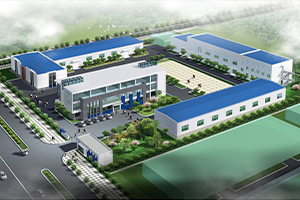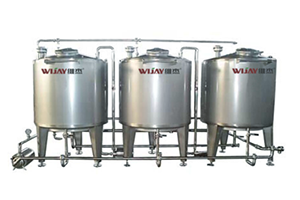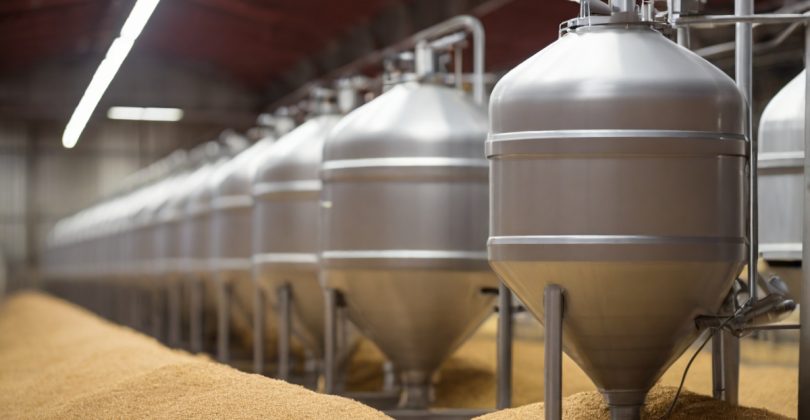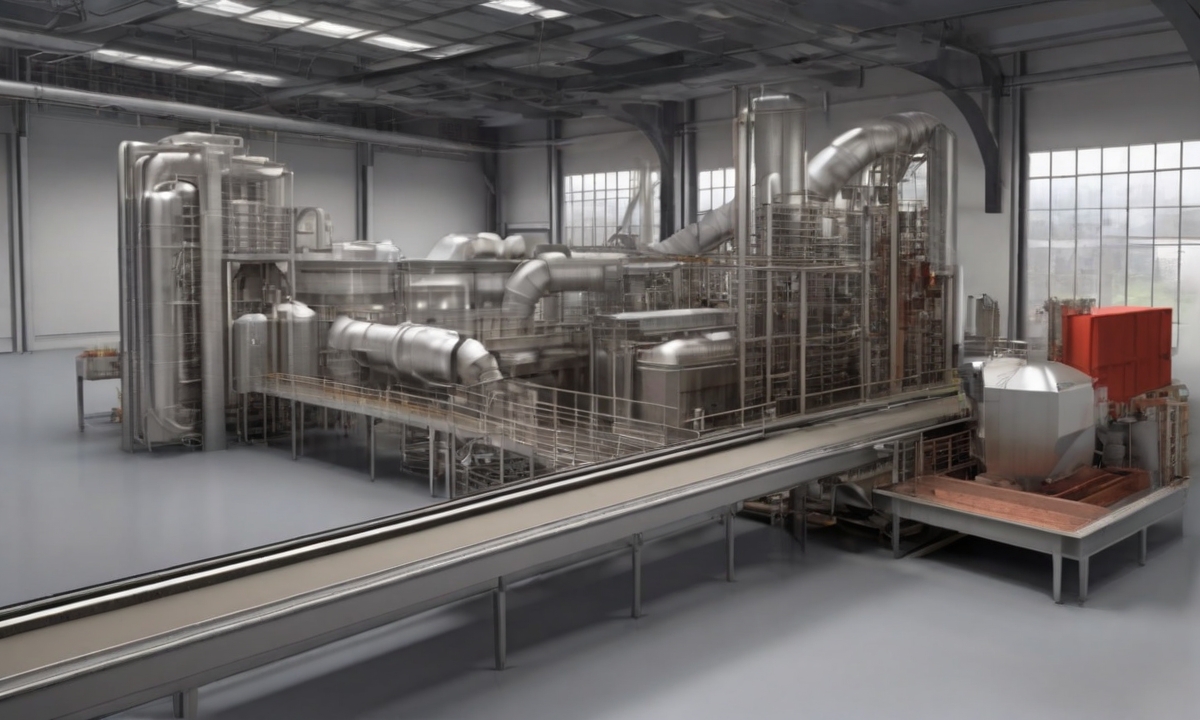It may surprise you to learn that a central feeding system can completely transform industrial operations by increasing productivity and simplifying procedures on a big scale. For a variety of sectors, this automated feeding system is revolutionary since it offers the perfect answer to their material handling requirements. The central feeding system integrates a centralized approach and provides a number of advantages that increase efficiency and decrease waste.
In this article, we will explore the numerous advantages and insights of a central feeding system. From its ability to automate material delivery to its impact on inventory management and cost savings, we will delve into the key components that make this industrial feeding solution indispensable. So let’s dive into the world of central feeding systems and discover how they can transform your business.
What is a Central Feeding System?
A central feeding system is a bulk material handling system that uses a centralized approach to convey and feed materials in an industrial facility. It offers a streamlined and efficient solution for handling the movement of materials across different points within the facility.
By centralizing the feeding process, this system eliminates the need for manual material handling and optimizes the flow of materials, minimizing disruptions and improving overall productivity.
Central feeding systems typically consist of a central material storage and distribution unit, feeding lines, and various feeding points throughout the facility. These systems are designed to handle a wide range of materials, from dry powders to granules and pellets.
With a centralized materials feeding approach, the central feeding automation systems ensure consistent material supply to the production lines, preventing delays and interruptions in the manufacturing process. It allows for efficient and accurate material delivery, reducing waste and enhancing operational efficiency.
Key Features of a Central Feeding System:
- Centralized material storage and distribution
- Precise and timely material delivery
- Elimination of manual material handling
- Optimized material flow and distribution
- Efficient and uninterrupted production
- Reduction of waste and material consumption
A central feeding system offers a reliable and cost-effective solution for wijay industries that rely on continuous material supply and precise feeding operations. It can be customized to fit the specific needs and processes of different industrial sectors, including plastics manufacturing, food processing, pharmaceuticals, and more.
In the following sections, we will explore the various benefits and applications of a central feeding system, as well as its role in enhancing efficiency, reducing waste, and improving overall operational performance in industrial settings.
Enhanced Efficiency with Automated Feeding
An automated feeding system, specifically a central feeding system, can significantly enhance efficiency in various industrial operations. By implementing a high-efficiency feeding system, precise and timely material delivery is achieved, resulting in reduced manual handling and improved overall productivity.
Here are some key ways in which an automated feeding system enhances efficiency:
- Accurate and timely material delivery: The automated feeding system ensures that materials are delivered precisely when and where they are needed, eliminating delays and minimizing downtime.
- Reduced manual handling: With automated feeding, the need for manual handling of materials is minimized, reducing the risk of injuries and fatigue among workers.
- Streamlined workflow: The central feeding system enables a smooth and continuous flow of materials, eliminating bottlenecks and optimizing production processes.
- Optimized resource utilization: The high-efficiency feeding system ensures that materials are used efficiently, minimizing waste and maximizing productivity.
- Improved quality control: By automating the feeding process, consistency and accuracy in material delivery are achieved, leading to improved quality control measures.
Whether it’s in manufacturing, food processing, or other industries, an automated feeding system offers the advantages of consistent and reliable material delivery, reducing manual labor requirements and increasing overall operational efficiency.
Streamlining Industrial Operations
When it comes to industrial operations, efficiency and smooth workflow are crucial for achieving optimal productivity. This is where a central feeding system truly shines as an effective industrial feeding solution. By seamlessly integrating conveying and feeding functionalities, this system streamlines operations, ensuring a continuous and uninterrupted flow of materials throughout the production process.
One of the key advantages of a central feeding system is its ability to automate material handling, eliminating the need for manual intervention. This not only reduces the risk of human error but also significantly improves the overall efficiency of the feeding process. With a centralized approach, materials can be conveyed to multiple points within the facility, enabling a more streamlined and systematic production flow.
In addition, the integration of a central feeding system eliminates the need for multiple individual feeding systems, reducing complexity and simplifying maintenance. This centralized solution minimizes the risk of bottlenecks or interruptions in the material flow, leading to smoother operations and increased production output.
Furthermore, a central feeding system allows for better control and monitoring of the feeding process. With advanced sensors and control systems, operators can accurately regulate the material flow, ensuring precise feeding and minimizing waste. This level of control and automation contributes to a more efficient and cost-effective production process.
Overall, a central feeding system serves as a comprehensive solution for industrial operations, effectively streamlining the feeding and conveying processes. By optimizing efficiency, minimizing interruptions, and enhancing control, it enables businesses to achieve higher productivity and maintain a competitive edge in today’s fast-paced manufacturing landscape.
Minimizing Waste with Bulk Material Handling
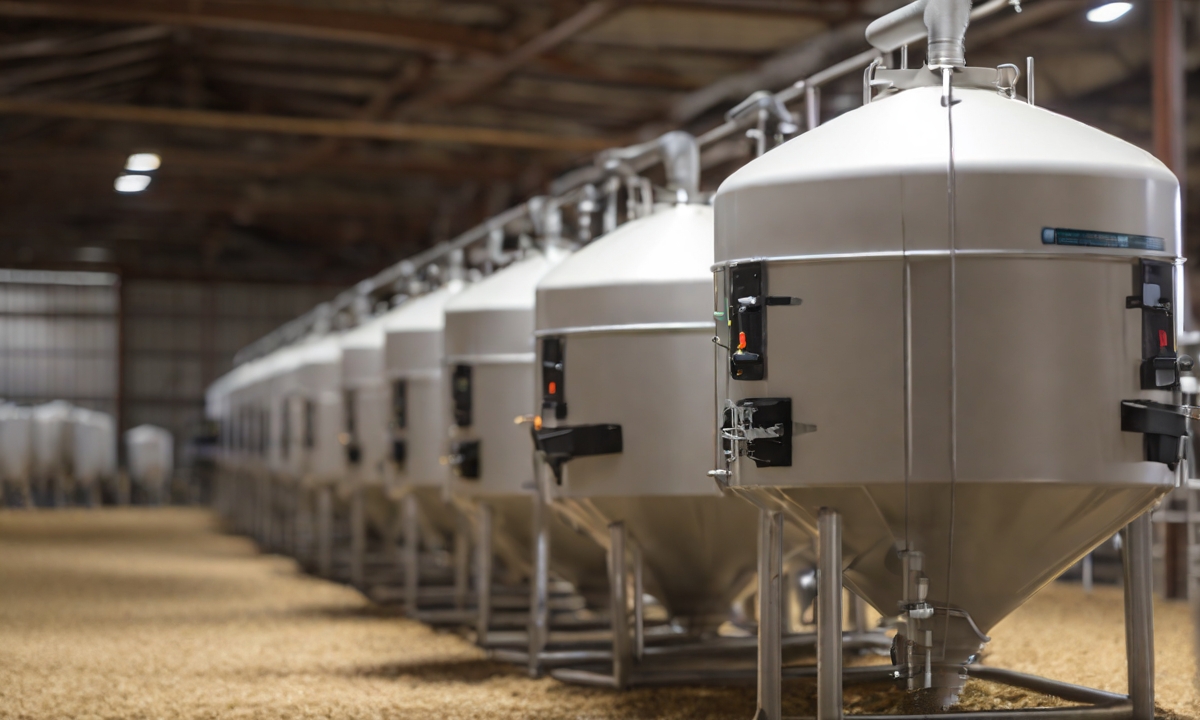
In today’s industrial landscape, efficient material handling plays a crucial role in optimizing productivity and reducing waste. One key solution that has proven to be highly effective in this regard is a bulk material handling system. This automated material handling system offers numerous advantages, including waste minimization, cost savings, and improved sustainability.
Accurate Material Delivery
A central feeding system, which is a type of bulk material handling system, ensures accurate and precise delivery of materials. By utilizing advanced control systems and sensors, the system can accurately measure and deliver the required quantities of materials at the right time. This eliminates overfeeding or underfeeding, thereby minimizing waste and reducing the need for corrective actions.
Optimized Material Usage
With a bulk material handling system, such as a central feeding system, there is better control and optimization of material usage. The system enables precise monitoring and measuring of materials, allowing industries to avoid unnecessary waste due to excessive or insufficient quantities of materials. The result is improved efficiency and cost savings.
Reduced Manual Handling
Manual handling of materials can often lead to spills, breakages, and other types of waste. However, with a bulk material handling system, the need for manual handling is significantly reduced. Automated material handling processes prevent human errors and ensure a smooth and efficient transfer of materials, minimizing the risk of waste generation.
Promoting Sustainability
The waste reduction achieved by implementing a bulk material handling system has a positive impact on the environment. By accurately delivering materials and minimizing waste, industries can contribute to sustainability efforts by conserving resources and reducing their overall environmental footprint. Moreover, the system’s energy-efficient operation further supports sustainable practices.
A bulk material handling system, such as a central feeding system, offers a comprehensive solution to minimize waste in industrial operations. By ensuring accurate material delivery, optimizing material usage, reducing manual handling, and promoting sustainability, this automated material handling system enables industries to achieve greater efficiency, cost savings, and sustainability goals.
Improved Inventory Management
Effective inventory management is essential for any industrial operation. A central feeding system serves as an ideal industrial feeding solution with a direct impact on inventory control.
One of the key advantages of a central feeding system is its ability to automatically monitor and control the flow and volume of materials. This ensures that the right amount of materials is delivered at the right time, eliminating the risk of stockouts or excess inventory.
With a central feeding system in place, industries can optimize their inventory management by:
- Reducing the need for manual inventory checks and stock counting, saving time and resources.
- Minimizing the risk of inaccuracies and errors in manual inventory management processes.
- Improving just-in-time (JIT) inventory practices, ensuring materials are available when needed without overstocking.
- Enhancing overall operational efficiency with a streamlined inventory management process.
By automating inventory management processes, a central feeding system enables industries to maintain optimal inventory levels, reduce costs, and improve productivity. With better control over inventory, businesses can focus on meeting customer demands, reducing waste, and maximizing profitability.
Flexibility and Adaptability
In today’s dynamic industrial landscape, flexibility and adaptability are crucial for staying competitive. A central feeding system offers the automated feeding solutions that industries need to respond to changing production demands effectively. With its ability to accommodate various materials and adjust to different requirements, this centralized materials feeding system provides the versatility that businesses require.
Here are some key features that highlight the flexibility and adaptability of a central feeding system:
- Material Compatibility: The automated feeding system is designed to handle a wide range of materials, including powders, granules, and flakes. This ensures that industries can utilize the system for diverse production processes.
- Customizable Configurations: The central feeding system can be tailored to meet specific production needs. It offers customizable options for conveying, blending, and dosing, allowing businesses to create a feeding solution that aligns precisely with their unique requirements.
- Scalability: As businesses grow and production demands increase, the central feeding system can effortlessly scale up to accommodate higher material throughput. This scalability ensures that the system remains adaptable to expanding operations.
- Quick Changeovers: With its user-friendly interface and intuitive controls, the automated feeding system enables quick changeovers between different materials or production runs. This minimizes downtime and maximizes production efficiency.
- Integration Capabilities: The central feeding system seamlessly integrates with existing infrastructure, such as extruders, injection molding machines, or other feeding mechanisms. This integration ensures a smooth transition and enhances the system’s adaptability.
By harnessing the flexibility and adaptability of a central feeding system, businesses can optimize their production processes and stay agile in today’s rapidly evolving industries.
Increased Safety Measures
Safety is of paramount importance in industrial settings. By implementing a central feeding system, companies can enhance safety measures and create a safer working environment for employees.
A central feeding system reduces the need for manual handling of materials, which minimizes the risk of accidents and injuries. With centralized materials feeding, employees no longer have to manually transport and deliver materials across the facility, eliminating potential hazards associated with heavy lifting or prolonged exposure to hazardous substances.
In addition, a central feeding system streamlines material delivery, ensuring a smooth and controlled flow of materials from the central source to the desired locations. This eliminates the need for employees to manually handle and transport materials throughout the production process, reducing the chances of spills, leaks, or other incidents.
The centralized materials feeding system also enables better control and monitoring of material flow, reducing the likelihood of overfeeding or underfeeding. This precise control minimizes the risk of equipment malfunctions or accidents caused by material imbalances, further promoting a safer working environment.
By prioritizing the implementation of an industrial feeding solution like the central feeding system, companies demonstrate their commitment to employee safety and well-being. This investment in safety measures not only protects employees but also contributes to improved productivity, as a safe and secure work environment boosts employee morale and engagement.
Cost Savings and ROI
Implementing a central feeding system in your industrial operations can result in significant cost savings and a high return on investment (ROI). This automated material handling solution offers several financial benefits that contribute to the long-term profitability of your business.
1. Improved Efficiency
By utilizing a central feeding system, you can streamline your material handling processes and improve overall efficiency. The automated nature of this system ensures precise and timely delivery of materials, eliminating delays and reducing manual handling. As a result, you can expect increased productivity and optimized workflow, leading to cost savings.
2. Waste Reduction
A central feeding system plays a crucial role in minimizing waste in your operations. This system accurately delivers materials, preventing overfeeding or underfeeding. By optimizing material usage and reducing waste, you can achieve cost savings by avoiding unnecessary material expenses and disposal costs.
3. Enhanced Productivity
With a central feeding system, you can enhance the productivity of your workforce. By automating material handling and eliminating manual tasks, your employees can focus on more valuable and complex operations. This increased productivity leads to higher output, faster turnaround times, and ultimately, improved profitability.
4. Cost-Efficient Inventory Management
The automation offered by a central feeding system enables better control and management of your inventory. By accurately monitoring and controlling the flow and volume of materials, you can avoid stockouts or excess inventory, which can be costly. This optimized inventory management reduces the risk of inventory-related expenses and ensures efficient resource allocation.
5. Long-Term Financial Benefits
Investing in a central feeding system provides long-term financial benefits for your industrial operations. The cost savings achieved through improved efficiency, waste reduction, enhanced productivity, and cost-efficient inventory management lead to a favorable ROI. Over time, the return on your investment will continue to grow as your operations become more streamlined and profitable.
By implementing a central feeding system as part of your automated material handling strategy, you can experience significant cost savings and enjoy a positive return on investment. The long-term financial benefits of this solution make it a worthwhile investment for industrial operations aiming for improved efficiency, reduced waste, and increased profitability.
Integration with Existing Systems
A central feeding system offers seamless integration with existing industrial systems, allowing for efficient material flow and enhanced productivity. Whether it’s connecting to conveyor belts or other feeding mechanisms, this automated feeding system can be easily customized to work in perfect harmony with the existing infrastructure.
Here are several key ways a central feeding system integrates with existing systems:
1. Integration with Conveyor Belts
A central feeding system can be seamlessly integrated with conveyor belts, enabling a smooth and continuous transfer of materials. This integration eliminates the need for manual handling and optimizes material flow throughout the production process.
2. Compatibility with Feeding Mechanisms
Whether it’s rotary valves, screw feeders, or other feeding mechanisms, a central feeding system can be tailored to directly connect and collaborate with these components. This compatibility ensures efficient and accurate material delivery, reducing waste and improving overall operational efficiency.
3. Customizable Control Systems
Central feeding systems come equipped with customizable control systems that can be easily integrated into existing control architectures. This allows for seamless communication and coordination between the central feeding system and other automated processes, ensuring optimal performance and synchronized operation.
4. Interoperability with Monitoring Systems
A central feeding system can integrate with existing monitoring systems, providing real-time data on material flow, inventory levels, and equipment performance. This interoperability allows for comprehensive monitoring and ensures proactive maintenance, minimizing downtime and optimizing operational efficiency.
By seamlessly integrating with existing systems, a central feeding system enhances the overall efficiency and effectiveness of industrial operations. It eliminates bottlenecks, optimizes material flow, and reduces manual handling, resulting in improved productivity and cost savings.
Maintenance and Support
Maintenance and support play a critical role in ensuring the optimal performance of a central feeding system. Regular maintenance is essential to keep the bulk material handling system in excellent condition, enabling it to operate at its full potential. By conducting routine inspections, cleaning, and servicing, potential issues can be identified and resolved promptly, reducing the risk of unexpected downtime and costly repairs.
In addition to routine maintenance, professional support is instrumental in guaranteeing the continuous operation of the high-efficiency feeding system. It is important to have access to knowledgeable experts who can provide technical assistance and troubleshooting when needed. By relying on dedicated support, industrial facilities can minimize disruptions and quickly address any concerns or challenges that arise.
In summary, regular maintenance and professional support are imperative for maintaining the reliability and effectiveness of a central feeding system. By prioritizing these aspects, industries can ensure the smooth functioning of their bulk material handling system, maximizing its efficiency and longevity.
Industry Applications
A central feeding system offers a versatile and efficient automated material handling and feeding solution that can cater to various industries. Let’s delve into some of the industry applications where this industrial feeding solution excels:
1. Plastics Manufacturing
In the plastics manufacturing industry, precision and consistency are vital for achieving high-quality end products. A central feeding system ensures a continuous supply of raw materials, enabling seamless production and minimizing material waste.
2. Food Processing
Food processing facilities require strict quality control and adherence to safety standards. An automated feeding system, such as a central feeding system, ensures hygienic and accurate ingredient delivery, improving efficiency and reducing the risk of contamination.
3. Automotive Manufacturing
The automotive industry demands efficiency and precision in material handling. A central feeding system optimizes the supply of components and raw materials to different production lines, facilitating streamlined assembly processes and enhancing overall productivity.
4. Pharmaceutical Production
In pharmaceutical production, maintaining product integrity and adhering to stringent regulatory requirements are critical. A central feeding system enables precise and controlled delivery of ingredient blends, ensuring accurate dosage and minimizing human error.
5. Chemical Processing
Chemical processing plants often handle a wide range of raw materials and require careful handling to prevent contamination or hazardous situations. A central feeding system can efficiently transport and deliver various chemicals, contributing to safer and more efficient operations.
-
6. Printing and Packaging
In the printing and packaging industry, speed and accuracy are crucial. A central feeding system ensures a constant flow of materials such as paper, ink, and packaging supplies, enabling uninterrupted production and reducing downtime.
These are just a few examples of the diverse industry applications where a central feeding system proves to be an invaluable asset. With its automated material handling capabilities, precise delivery, and adaptability, it offers a tailored solution to meet the specific requirements of different sectors, improving operational efficiency and driving overall productivity.
Scalability and Future-Proofing
A central feeding system offers not just immediate benefits, but also scalability and future-proofing capabilities for industries. With the ever-changing landscape of production demands and advancements in technology, the central feeding system is designed to adapt and grow alongside businesses.
When industries experience growth or require increased production capacities, the central feeding system can be easily expanded or upgraded. Whether it’s adding more feeders, introducing additional material conveying lines, or integrating advanced control systems, the central feeding system provides the flexibility to meet evolving needs.
This scalability ensures that businesses can maintain optimal productivity and efficiency without major disruptions or the need for extensive overhauls. By seamlessly integrating new components into the existing system, industries can avoid costly downtime and avoid starting from scratch.
Additionally, the future-proofing capabilities of a central feeding system enable businesses to stay ahead of technological advancements. As new technologies and features emerge, the central feeding system can be easily updated or integrated to leverage these advancements. Whether it’s implementing state-of-the-art sensors for real-time monitoring or adopting more advanced material handling algorithms, businesses can continuously improve their operations.
Investing in a central feeding system not only addresses immediate needs but also ensures that industries can adapt and thrive in the face of changing demands and technological advancements. With scalability and future-proofing capabilities, this industrial feeding solution provides a reliable and sustainable approach to feeding and conveying materials for years to come.
Environmental Impact
In this section, we will explore the environmental impact of an automated feeding system, specifically the central feeding system. This bulk material handling system plays a crucial role in minimizing the overall environmental footprint of industrial operations.
The central feeding system offers several key features that contribute to a more sustainable approach:
- Waste Reduction: By reducing waste, the central feeding system helps industries optimize their material usage. It ensures precise and accurate delivery of materials, minimizing the chances of overfeeding or underfeeding. This not only reduces waste but also conserves valuable resources.
- Optimized Material Usage: The automated feeding system efficiently manages the flow of materials, ensuring their optimal usage. This reduces the need for excess materials and minimizes unnecessary consumption, leading to significant cost savings and environmental benefits.
- Improved Energy Efficiency: The central feeding system is designed to operate with high energy efficiency. By optimizing material transport and minimizing energy consumption, it helps reduce the environmental impact associated with industrial operations.
Overall, the automated feeding system, particularly the central feeding system, plays a vital role in promoting sustainability and minimizing the environmental footprint of industrial sectors. By reducing waste, optimizing material usage, and improving energy efficiency, this bulk material handling system offers a greener approach to industrial feeding.
Innovation and Advancements
In the ever-evolving landscape of automated material handling, central feeding systems continue to undergo innovative advancements that drive higher efficiency and productivity. Through improved control systems, advanced sensors, and enhanced monitoring capabilities, these cutting-edge features revolutionize the way industries handle materials.
Enhanced Control Systems
Central feeding systems now incorporate state-of-the-art control systems that enable seamless operation and precise material handling. With advanced controls, operators can easily manage the flow, distribution, and mixing of materials, ensuring optimum efficiency and minimizing waste. These enhanced control systems provide real-time data and insights, allowing for quick adjustments and optimizations to meet production demands.
Advanced Sensors for Precise Monitoring
Industry-leading central feeding systems rely on advanced sensors to monitor material flow, detect potential blockages, and ensure accurate feeding. These sensors use cutting-edge technology to provide real-time feedback on material levels, allowing operators to maintain consistent and reliable feeding. By eliminating guesswork and enabling proactive maintenance, these sensors enhance operational reliability and efficiency.
Remote Monitoring and Data Analytics
The latest advancements in central feeding systems have introduced remote monitoring and data analytics capabilities. Operators can now remotely access system data and performance metrics, facilitating proactive maintenance and minimizing downtime. Through data analytics, operators can analyze feeding patterns and trends, making informed decisions to optimize material consumption, reduce waste, and maximize overall operational efficiency.
Modularity and Scalability
Innovative central feeding systems are designed with modularity and scalability in mind. This enables industries to customize their feeding solutions according to their specific production requirements. Whether it is expanding the system capacity or integrating with new machinery, the modularity and scalability of these systems ensure future-readiness and adaptability to evolving industry needs.
By harnessing these groundbreaking innovations and advancements, central feeding systems continue to push the boundaries of automated material handling. With enhanced control, advanced sensors, and data-driven insights, these high-efficiency feeding systems offer industries unparalleled efficiency, productivity, and reliability, revolutionizing the way materials are handled and processed.
Conclusion
In conclusion, the implementation of a central feeding system offers a multitude of benefits for industrial operations. This reliable and efficient automated feeding system streamlines processes, enhances efficiency, and reduces waste, resulting in significant improvements in productivity and profitability.
By utilizing a centralized approach to materials feeding, industries can ensure a smooth and continuous flow of materials throughout their facilities. This not only optimizes the production process but also minimizes manual handling and potential hazards, creating a safer working environment for employees.
Furthermore, a central feeding system contributes to improved inventory management by automatically monitoring and controlling the flow and volume of materials. This enables better inventory control, reducing the risk of stockouts or excess inventory, which can lead to cost savings.
With its flexibility and adaptability, a central feeding system can easily accommodate various materials and be adjusted to meet changing production needs. It integrates seamlessly with existing industrial systems, such as conveyor belts and feeding mechanisms, allowing for a customized and harmonious workflow.
FAQ
What is a central feeding system?
A central feeding system is a bulk material handling system that utilizes a centralized approach to convey and feed materials across different points of an industrial facility.
How does a central feeding system enhance efficiency?
An automated feeding system, such as a central feeding system, significantly enhances efficiency by allowing for precise and timely delivery of materials, reducing manual handling, and improving overall productivity.
How does a central feeding system streamline industrial operations?
A central feeding system serves as an effective industrial feeding solution by integrating conveying and feeding functionalities, ensuring a smooth and continuous flow of materials throughout the production process.
How does a central feeding system minimize waste?
A central feeding system minimizes waste by accurately delivering materials and preventing overfeeding or underfeeding, leading to cost savings and improved sustainability.
How does a central feeding system improve inventory management?
A central feeding system improves inventory management by automatically monitoring and controlling the flow and volume of materials, enabling better inventory control and reducing the risk of stockouts or excess inventory.
How flexible and adaptable is a central feeding system?
A central feeding system is designed to accommodate various materials and can be easily adjusted to suit changing production needs, providing versatility in industrial operations.
How does a central feeding system contribute to increased safety measures?
By reducing manual handling and potential hazards associated with material delivery, a central feeding system promotes a safer working environment for employees.
What are the cost savings and ROI associated with a central feeding system?
A central feeding system offers long-term financial benefits by improving efficiency, reducing waste, and enhancing productivity in industrial operations.
Can a central feeding system integrate with existing systems?
Yes, a central feeding system can integrate seamlessly with existing industrial systems, such as conveyor belts or other feeding mechanisms, ensuring compatibility and efficiency.
What is the importance of maintenance and support for a central feeding system?
Regular maintenance and professional support are crucial for the optimal performance and continuous operation of a central feeding system.
What are the industry applications of a central feeding system?
A central feeding system finds applications in various industries, including plastics manufacturing, food processing, and more, catering to specific requirements and enhancing efficiency.
Does a central feeding system offer scalability and future-proofing capabilities?
Yes, a central feeding system offers scalability and future-proofing capabilities, allowing for expansion and upgrades to accommodate increasing production demands and advancements in technology.
What is the environmental impact of a central feeding system?
A central feeding system contributes to minimizing the overall environmental footprint of industrial operations by reducing waste, optimizing material usage, and improving energy efficiency.
What are the latest innovation and advancements in central feeding systems?
Central feeding systems have seen advancements in control systems, sensors, and monitoring capabilities, further improving the efficiency and effectiveness of automated material handling.
